This is part of a series of design blogs exploring the development of Salvage Union a post-apocalyptic mech tabletop roleplaying game currently live on Kickstarter here.
Salvage Union is a hack of the Quest RPG and in our last blog we explored what Quest is you can read that here.
In this blog we're going to answer a question we get a lot which is 'Why Quest?'

Why did we choose to use Quest as the basis for our mech game Salvage Union?
Salvage Union began its journey as a meeting of two games. Aled Lawlor was working on a miniature based mech wargame and came up with many of the mech designs and corpo profiles currently in Salvage Union such as the Gopher. He also laid out the backstory of the world including the likes of the various corpo arcologies dotting the landscape and the backgrounds to many of the corpos and wider world.
This got shelved for some time until Aled's friend Malcolm Ilridge (Mal) was working on his own tabletop RPG 'B.A.N.E' which he had been testing with his son and using Legos they'd built together as stand in miniatures. Aled play tested B.A.N.E with Mal, liked a lot of the ideas especially the concept of the salvage unions and their crawlers which was a core part of B.A.N.E and suggested he merge the ideas together.

Aled wrote up some rules for this merging both of their concepts into one playable tabletop roleplaying game. Having the most experience and enjoyment with games that focussed on narrative and cinematic play such as Alien by Free League, Aled came upon Quest as it was released and decided to port the central d20 mechanic of Quest to the early version of Salvage Union as it fit his particular style of running games. This provided an engaging core to the game and the variable resolution in particular helped it come out of its wargame roots into the wider world of role playing games.
Aled ran the game in its early stages for Panny, Malcolm and others within our group to good success. This version also included the initial rules for mech creation, the system and module split, as well as heat, pushing and the likes of mech structure and damage. The game however was still in a hybrid stage, with many elements existing from its original conception many of which still had a 'wargame' rather than 'narrative tabletop rpg' feel.
For example the Push mechanic which we developed and added to the core of Quest initially gave you an extra action during play. Following playtesting we changed this to a re-roll as additional actions fit better into a wargaming core than they did within roleplaying. Especially so within a game that didn’t have a strict order of actions and allowed you to do numerous ‘out of combat’ actions that made getting a good roll important, but getting additional actions less relevant.

Panny had played Quest too upon its release and enjoyed its freeform and open nature that encouraged player agency, having a background playing a lot of rules lite ‘OSR’ games as well as narrative indie games like PbtA he saw a lot of positives within Quest to evoke that similar style of play he enjoys.
Aled and Panny began working together as they founded Leyline Press and development of Salvage Union began properly again with Panny coming on board to help with the writing, design and development of the game letting Aled focus on design, playtesting, production, layout and art.
What we both realised we wanted from Salvage Union and from mech games in general was simplicity in play. We both loved the genre and had enjoyed other games on the market such as BattleTech or Lancer however found them particularly rules heavy for us to run and play ourselves as well as to introduce others too. They also clashed with our preferred narrative and freeform styles of play.

Quest provided the perfect basis to create our own easy to learn mech tabletop RPG. We began to really delve into Quest as a system as we saw how we could take its many varied core elements and bolt them onto a mech chassis. Keeping the simplicity and the narrative principles of the game intact whilst adding just enough additional rules crunch to satisfy the crunchier aspects of mech games such as building and customising your mechs and making tactical choices.
The core d20 resolution mechanic gave us a lot of flexibility here. We use exactly the same system within Salvage Union as Quest uses and it allows players to come up with creative solutions to situations in play and know that they’ve got a solid chance of success. It also provides potential for interesting choices and a constantly dynamic style of play that propels itself forward at a fast pace.

We expanded on the core mechanic by adding the ‘Push’ mechanic. This allows you to re-roll the die but you have to push your mechs nuclear reactor to do so. This gains you heat and forces a ‘Reactor Overload Check’ which can result in your mech shutting down, losing parts or even blowing up. This additional layer of complexity to the core mechanic added a layer of risk/reward whilst tying into a common feature of mech games which is managing heat level.
The next ‘hack’ was to turn the abilities from Quest into modular things you could use within your mech. The game from its roots already had your mech built from Systems and Modules.
Systems are physical hardware you mount on your Mech and Modules are software you slot in. Each mech has a certain capacity for each that limits how many you can mount on them.
Systems include all weapons you mount onto your mech as well as utility tools such as ejection seats or chaff launchers to deflect missile fire.
Modules have more specific functions, like being able to hack into opposing mechs, scan areas or terrain or even your basic function to communicate via your Communications Module.

Many of these Systems and Modules require Energy Points to use, working in much the same way as Ability Points in Quest. We wanted spending these points to do evocative and punchy things in play. We love the awesome potential for mech games to have moments where you leap over a mech to target their rear armour or target their legs to cripple them but realised most games to implement those things have a lot of heavy rules to resolve them in play.
Instead we went for a much simpler but equally punchy approach. As an example the Advanced Targeting Module lets you target an enemy mech's weapon or locomotion system and blow it apart on a hit by simply spending energy points. Whilst this seems powerful a mech can take Armour Plating which lets them negate damage or an effect by destroying the Armour Plating.
Instead of having to worry about creating rules for hit locations, armour values, attack modifiers and so on we just have a big red button you can press that lets you blow up parts of an opposing mech. We then add to that other systems and modules you can take to counteract such effects and in doing so create a balance of different options for a player to choose.

These abilities are powerful but limited by both your energy points as well as different systems and modules that can counter them which lets us make them as explosive as possible.
What this allows is for us to take the cool things we love about mech games, like being able to blow up specific parts of a mech and create simple mechanics via the Ability Point system hack to adjudicate it in play and add layers of complexity through an easy to understand system. This isn't limited to combat abilities either and we have systems and modules that allow you to track targets, jump jet over obstacles, scan areas for information and dig through vast areas of wreckage all of which use the same energy point system to resolve.

In Salvage Union you play as a Pilot too. We wanted to make these viable in play too. We split them Pilot Classes such as Hauler, Hacker, Soldier and Scout in a similar way to Quest which has more classic fantasy classes such as Fighter, Spy and Wizard.
Each of the Salvage Union Pilot Classes has abilities and pilots have a separate pool of ability points to mechs. These abilities can function by themselves, such as the Haulers ‘Let’s make a deal’ ability that lets them make a favourable deal with someone in the wastelands. They can also function in a mech depending on context, for example the Soldier has an ‘Overpower’ ability which lets them pin a foe down. They can do that as a Pilot or when piloting a mech with arms and can also choose to either spend Energy or Ability points when doing so to add additional flexibility.

This combination of Systems, Modules and Pilot abilities combined a variety of Mech Chassis in the game which provide further flavour and abilities allowed us to create a robust and varied customisation system whilst still keeping the game relatively simple. This lets players create the mechs they want to use. They can create a hyper-focussed combat mech by combining a Brawler Chassis with autocannons, missiles, targeting modules and a Soldier Pilot. Alternatively they might swap out those autocannons for a Wide Band Hacking Chip, replace the targeting module with some hacking modules instead and create a hybrid hacker/missile bot.
To summarise you can see how whilst it wasn’t a direct path, as design rarely is, Quest allowed us to create the core of a narrative focussed and simple to learn mech game that still had a wide range of options and choices for players both during customisation and within actual play. This in its own way mirrored the initial goals of Quest for TC Sottek which was to create an easy to learn and accessible roleplaying game that allowed you to do really cool and fun things at the table through its mechanics.
Interested in playing Salvage Union?
Salvage Union is now available to buy here.
You can download the free QuickStart here https://leyline.press/products/salvage-union-beta-quickstart-digital-edition-pdf
You can join the Salvage Union Discord here where we're running weekly playtest games- https://discord.gg/gmM6jTT8qm
Follow Salvage Union on Twitter - @salvageunion
Follow Salvage Union on Instagram - @salvageunion
Subscribe to the Leyline Press newsletter here to receive updates Salvage Union and our other games.
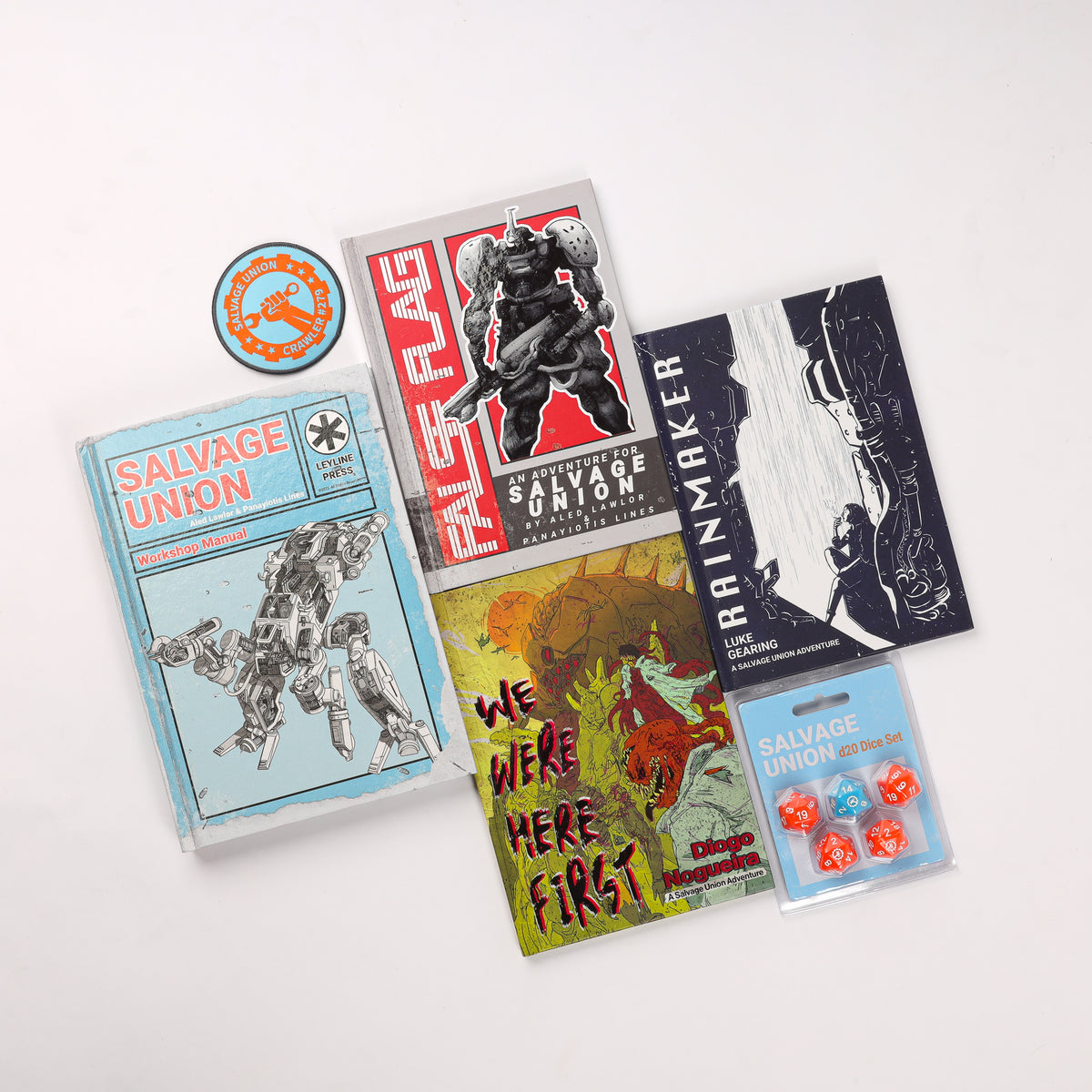
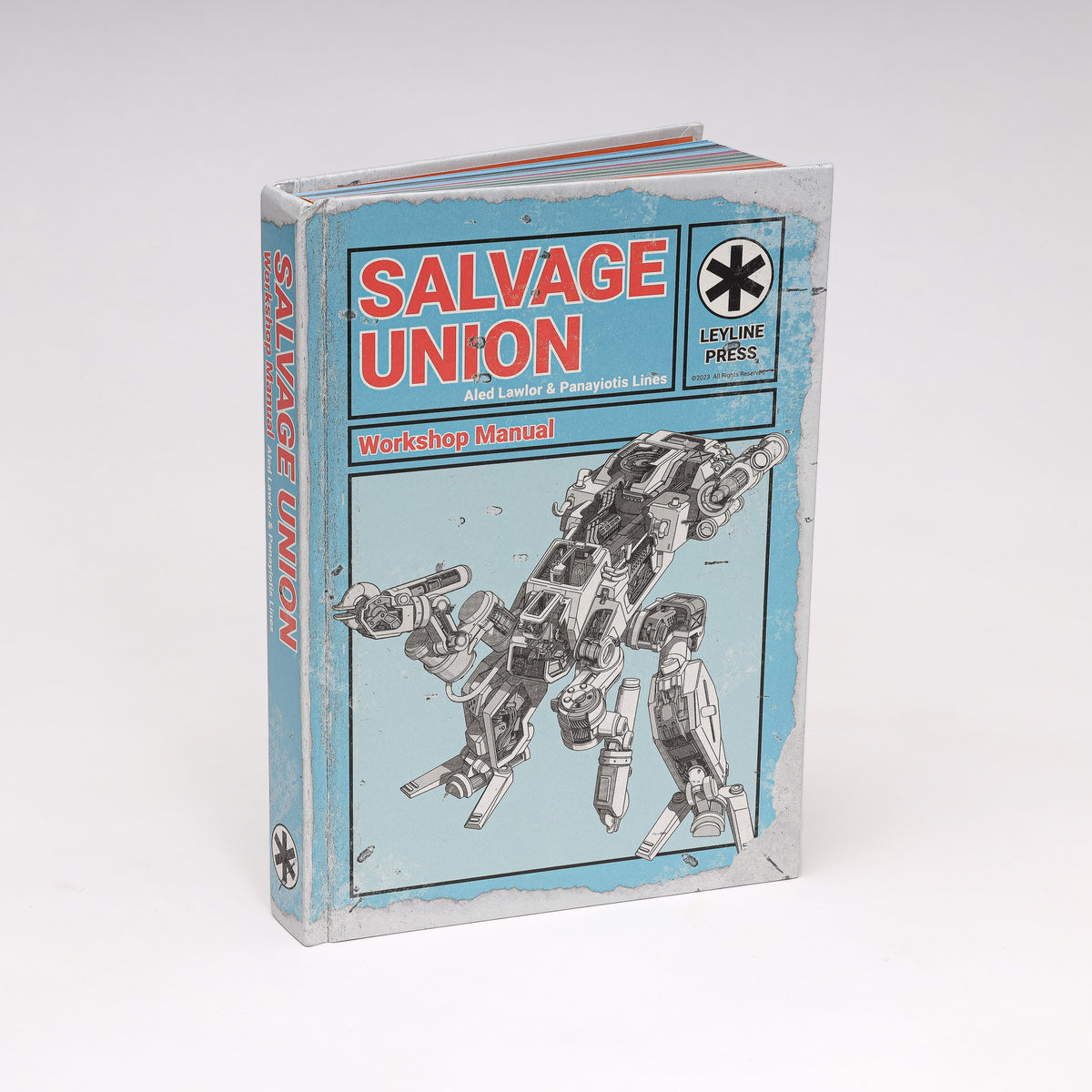
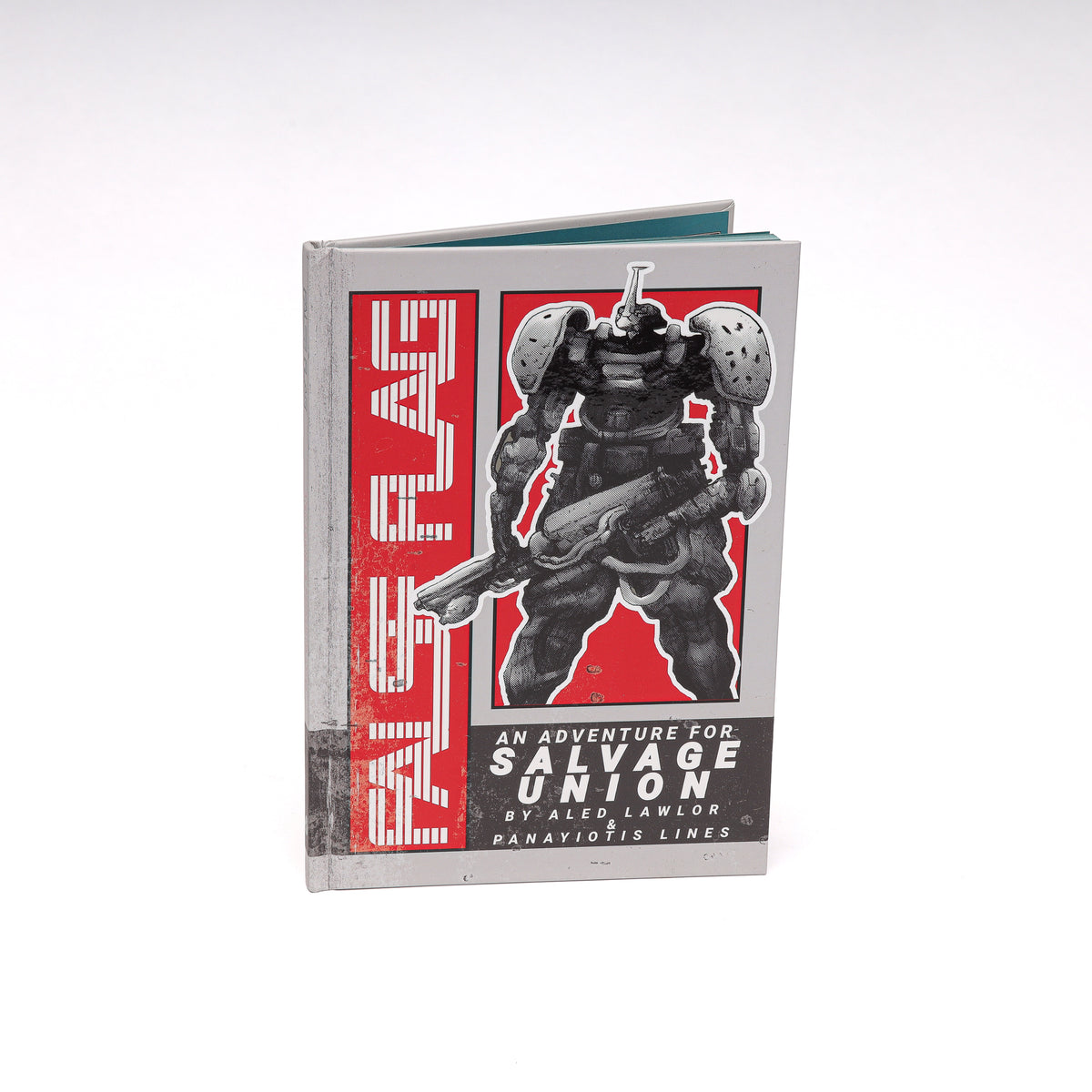
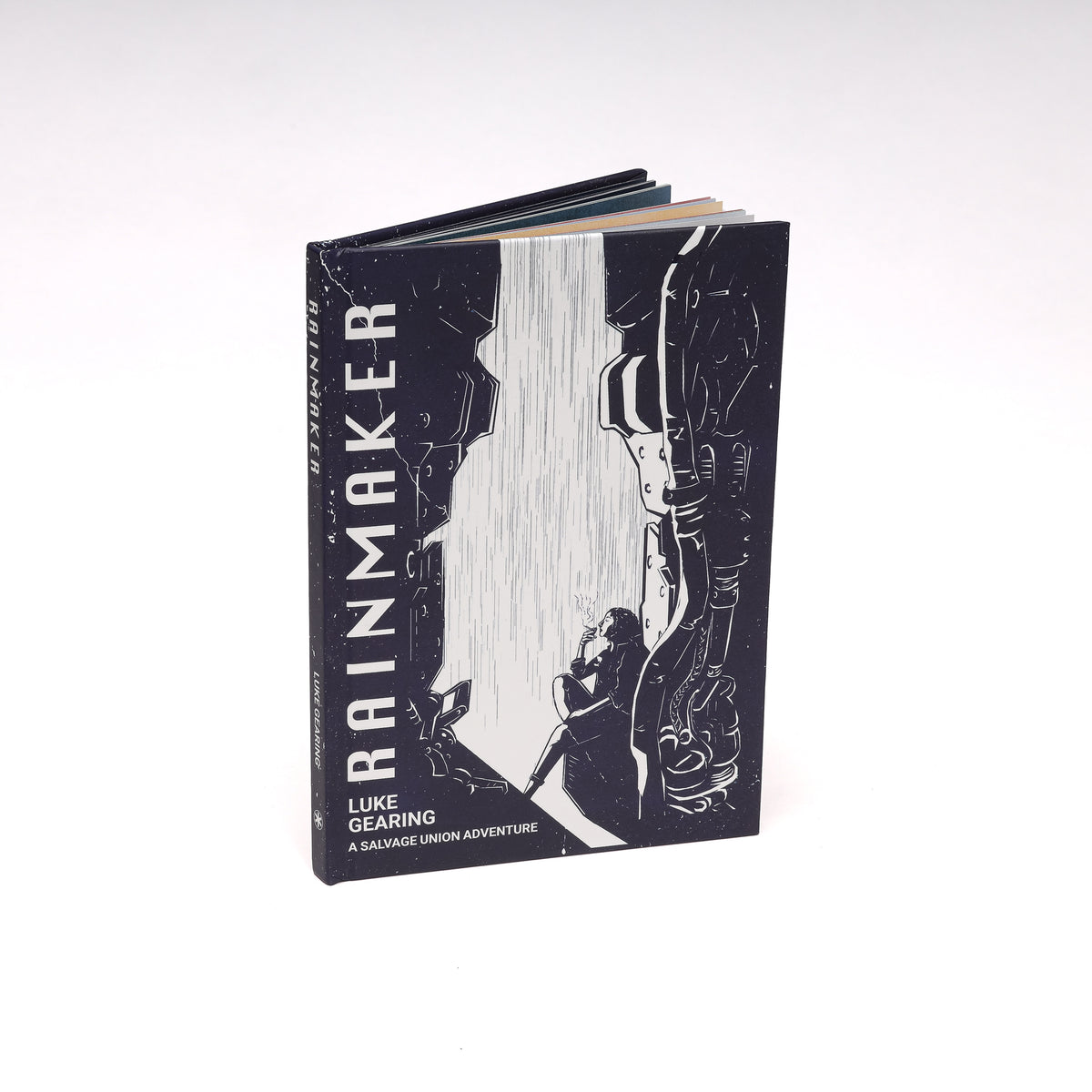

2 comments
This makes so much sense now and I am stoked to receive the game. Love reading about this process! Please keep it coming.
Another good post. I appreciate the info. Sounds like a pretty major overhaul of Quest but I like that. I agree mech games tend to be too heavy and I’d love to play some with my game group but the amount of time to learn rules and introduce them can be a turnoff. It sounds like with the systems and modules for mechs there will be a neat way to make sure everyone has a different skill set while still making it very easy to learn what your mech can do. Will there be printable sheets or cards for each of the mechs and different modules to make it easy for a player at a glance to know their abilities without needing the book?